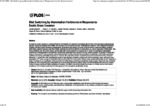Please use this identifier to cite or link to this item:
http://www.alice.cnptia.embrapa.br/alice/handle/doc/1039700| Title: | Diet switching by mammalian herbivores in response to exotic grass invasion. |
| Authors: | BREMM, C.  CARVALHO, P. C. F.   FONSECA, L.   AMARAL, G. A.   MEZZALIRA, J. C.   PEREZ, N. B.   NABINGER, C.   LACA, E. A.   |
| Affiliation: | Carolina Bremm, UFRGS; Paulo C. F. Carvalho, UFRGS; Lidiane Fonseca, UFRGS; Glaucia A. Amaral, UFRGS; Jean C. Mezzalira, UFRGS; NAYLOR BASTIANI PEREZ, CPPSUL; Carlos Nabinger, UFRGS; Emilio A. Laca, UCD. |
| Date Issued: | 2016 |
| Citation: | Plos One, v. 11, n. 2, e0150167, 26 fev. 2016. |
| Description: | Invasion by exotic grasses is a severe threat to the integrity of grassland ecosystems all over the world. Because grasslands are typically grazed by livestock and wildlife, the invasion is a community process modulated by herbivory. We hypothesized that the invasion of native South American grasslands by Eragrostis plana Nees, an exotic tussock-forming grass from Africa, could be deterred by grazing if grazers switched dietary preferences and included the invasive grass as a large proportion of their diets. |
| Thesagro: | Erva daninha Eragrostis plana Pastagem Animal herbívoro |
| Type of Material: | Artigo de periódico |
| Access: | openAccess |
| Appears in Collections: | Artigo em periódico indexado (CPPSUL)  |
Files in This Item:
| File | Description | Size | Format | |
|---|---|---|---|---|
| PLOSONEDiet.pdf | 282,81 kB | Adobe PDF |  View/Open |









